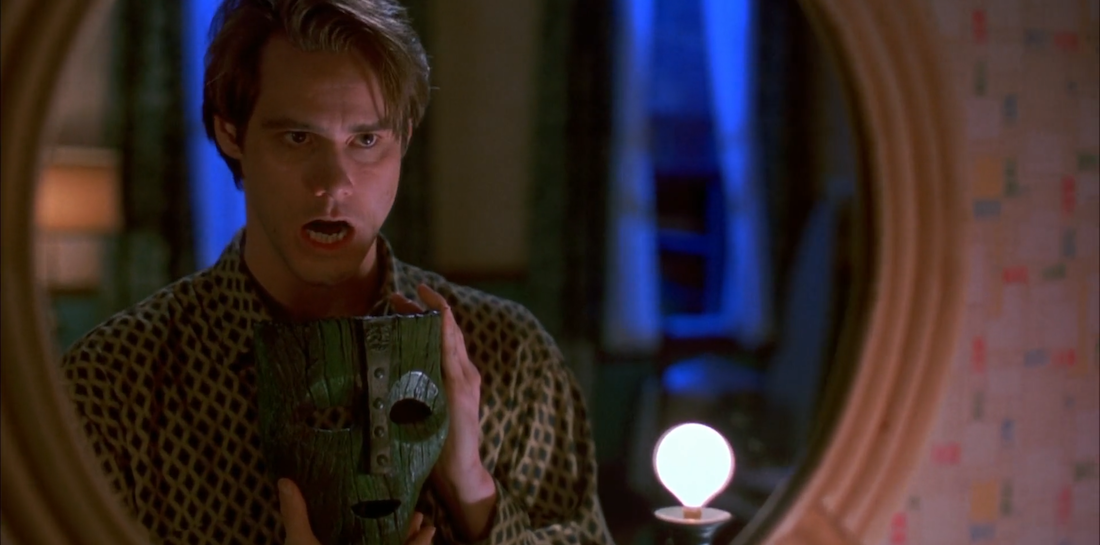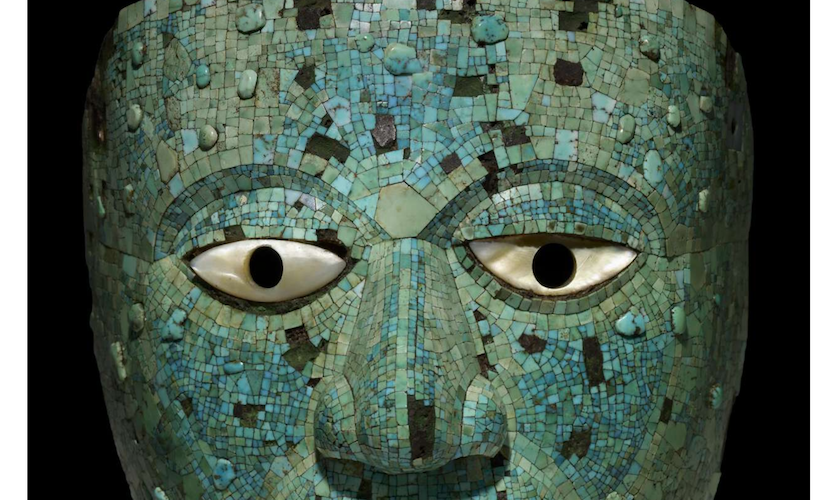THE MASK and Chasing Id Through History
If you were around in 1994, there was no way you could have avoided the pop culture phenomenon that was over forty something dads incessantly quoting the line “Sssmokin'” from THE MASK like they just discovered comedy. With ACE VENTURA: PET DETECTIVE, DUMB & DUMBER, THE MASK all coming out in 1994 (and BATMAN FOREVER fast approaching in 1995), Jim Carrey’s box office reign had just begun. Between catchphrases from THE MASK and people talking out of their buttholes like ACE VENTURA, popular culture was fully in the grip of Carrey-mania. The surface appeal to his movies was the over-the-top physical comedy laced with a heavy dose of schoolboy humor, but I would argue that Carrey also brought a relatable sense of sincerity to his madness that kept fans wanting more. In his roles, viewers could live vicariously through him by laughing alongside the massive freak outs and explosions that we dream of unleashing upon the unfair and stressful world.
There is no better example of this than THE MASK. A film about a regular schlub named Stanley Ipkiss finding an ancient mask created by the Norse God Loki, fueled by supernatural powers of mischief that empowered the wearer's most primal and aggressive instincts. Aside from all the zany physical powers the Loki mask granted, its greatest gift was one of confidence and freedom from the anxiety of consequences. This mask embodied Freud's concept of the Id—the unbridled subconscious desires to feed only pleasure.
In doing research for this article, I was hoping that there would be a specific mask from ancient history providing inspiration for the original comic character created by Doug Mahnke and John Arcudi, the 1994 movie directed by Chuck Russell, and/or the Saturday morning cartoon.
Instead I found myself diving head first into the overly complicated fictional origin story of this Loki mask. Long story short, it is simply a mask created by a Norse God meant to cause chaos, crafted in Africa, that traveled to the USA.
I was disappointed that the Loki mask didn't have a specific counterpart in ancient history. Our ancestors across all continents loved ritual masks, and Loki is by no means an unknown figure. But it did inspire me to research other famous green masks discovered in dig sites from around the world.
It seems cliché to talk about “the invisible masks we all wear as humans” in order to function in society. It is something we can all empathize with and have felt.
I think it is far more interesting to see how those common human feelings translate into the material world. In this instance, masks.
Why did these cultures create these masks? What influenced their choice of materials and designs? How did they use them? Who used them and what does it say about their status in ancient society? All these questions and more are what make archaeology and anthropology so much fun. It is a field where science stems from simply being human and how that feels.
From my feelings, can I infer the why, what, when, and how? Our connection to the past is simply by being human as well. Isn’t that kind of magical?
What my feelings tell me is that a mask is for hiding or protecting ourselves from the repercussions of our actions.
For better or for worse, it is a tool of artificial confidence. Behind a mask, a person feels empowered to do things that they normally wouldn't. Behind a mask, we can project ourselves to be everything that we are not. If inside each of us is our true monster Id, the mask is the portal for which Id can escape and thrive.
In my research, I found two green masks that felt the most likely to be the source of inspiration for the Loki mask, had there been one. First is the Serpentine mask discovered in 2011 at a pyramid in Teotihuacan, Mexico. It is especially unique in that its design and craftsmanship is unlike the many other masks that have been discovered across the Aztec and Mayan nations. It doesn't follow the cultural patterns of other artifacts we've seen. Most notably, its facial features are far more realistic than other artifacts of that nature. The mystery behind where the mask was discovered, its uniqueness in design and material, and the question of its purpose matches well with the Loki mask of Mischief. So much so that the internet made that same connection (Barnhardt, 2021).
Another mask that could have been an inspiration to the Loki mask is turquoise mosaic mask discovered in Mexico. Experts theorize that it could be a representation of the God Nanahuatzh who later became the Sun (British Museum, 2022). This mask is remarkable in that there are holes on the side that tell us it was most likely worn during ceremony or ritual practice. The fact that it resembles the human form of a God reminds me of THE MASK in that it presents the idea, what if an ordinary person of ordinary character is presented with great power and little to no consequence. Do we all become green Stanley Ipkiss? Are everyone's inner desires generally the same? Are we all the same monster inside and is that just a part of being human? If we are all the same monster inside, then what is it that makes us unique?
Ultimately, Stanley had to decide he did not want to be controlled by the desire to have no control. He learned that his true humanity came from all parts of him working together and that feeding his desires exclusively served no meaningful fulfillment. It is a timeless tale that humans number one enemy is and always will be ourselves.
Masks give us a temporary reprieve from our humanity, but to stay permanently in one extinguishes the very magic that makes you human, and that is that you are a sum of all parts. You are complicated by nature and design. And being complicated is what makes humans unique and beautiful.






